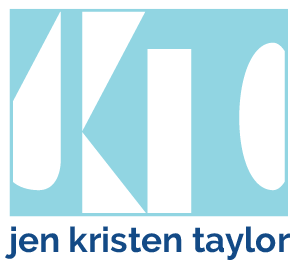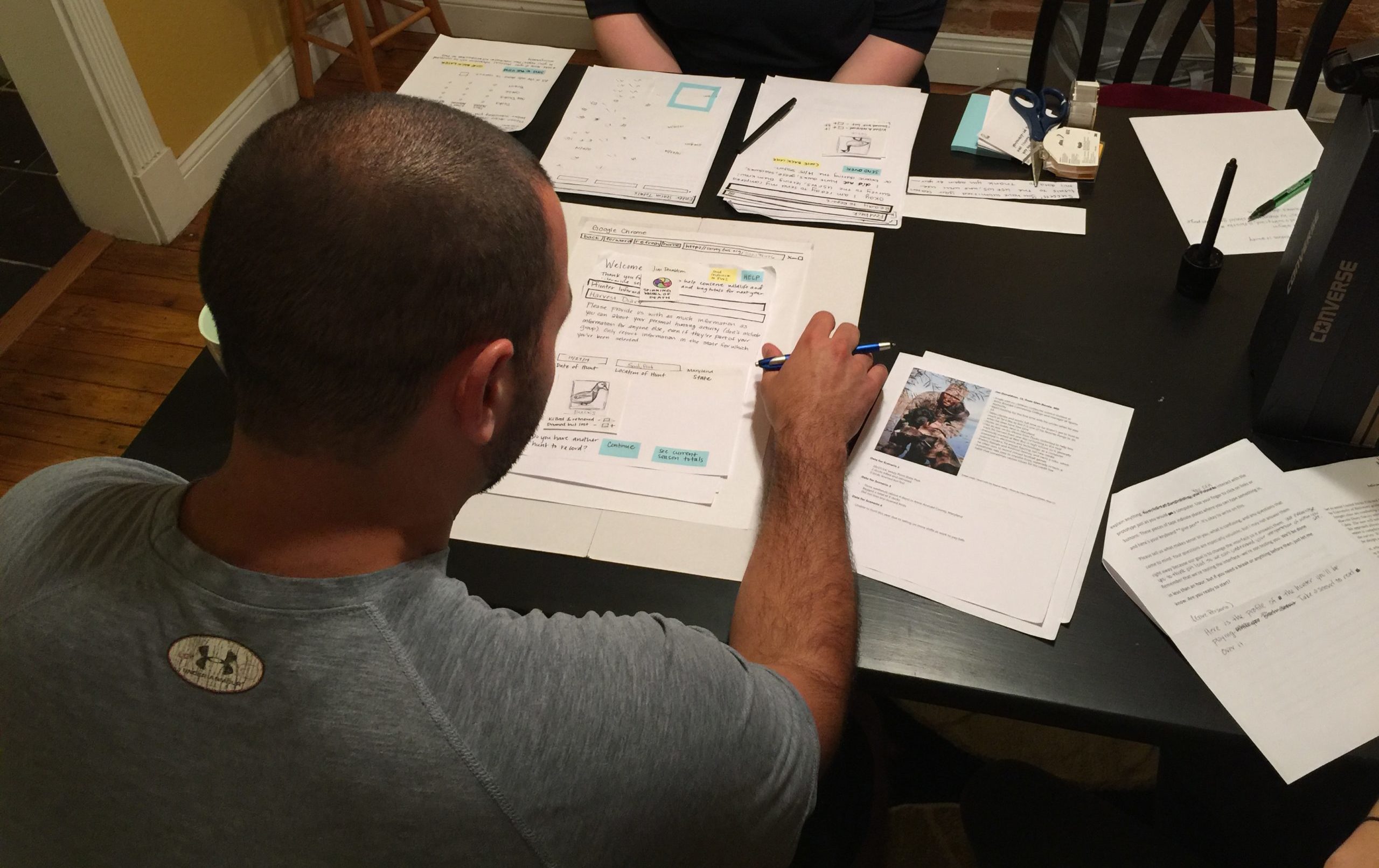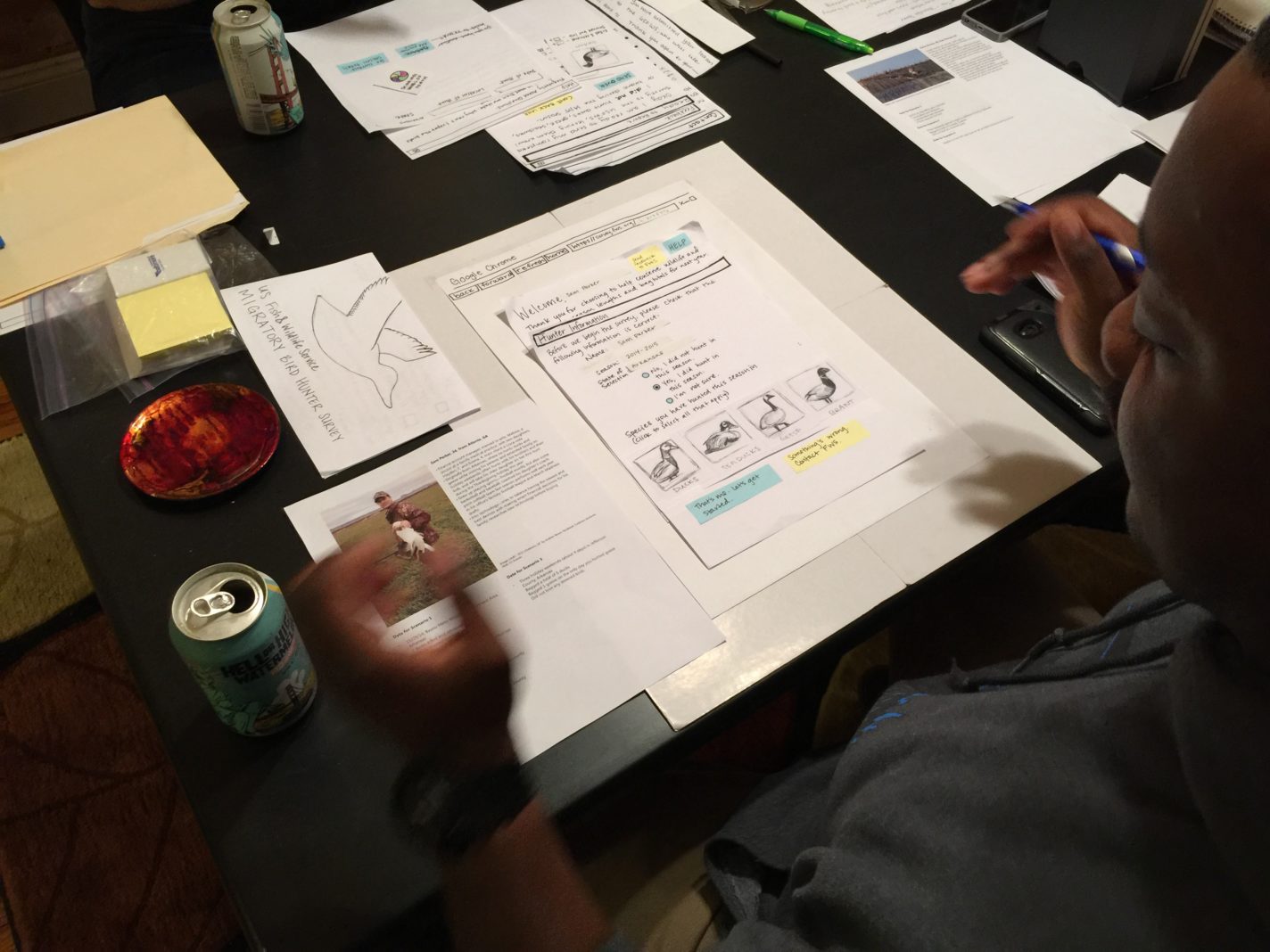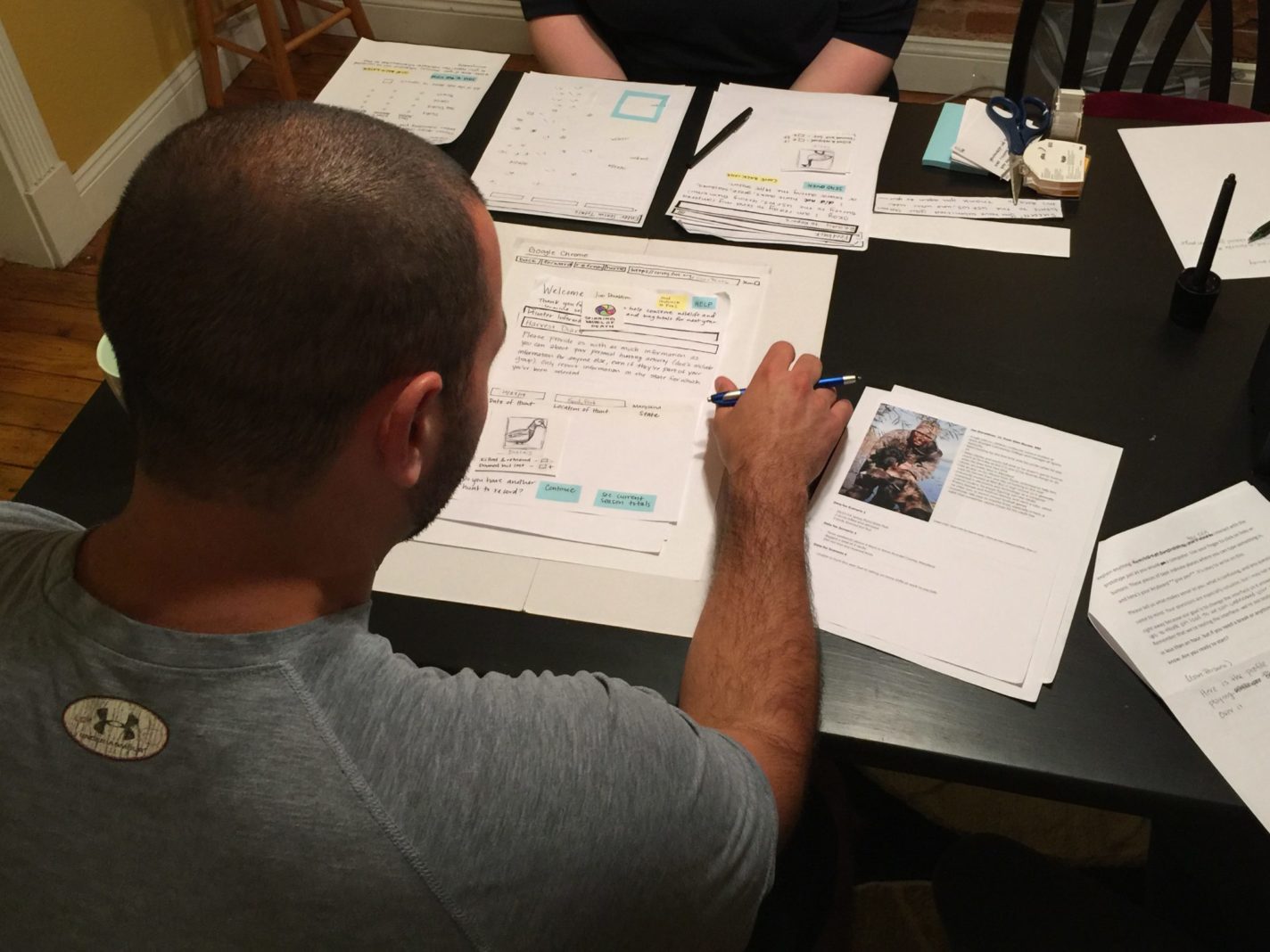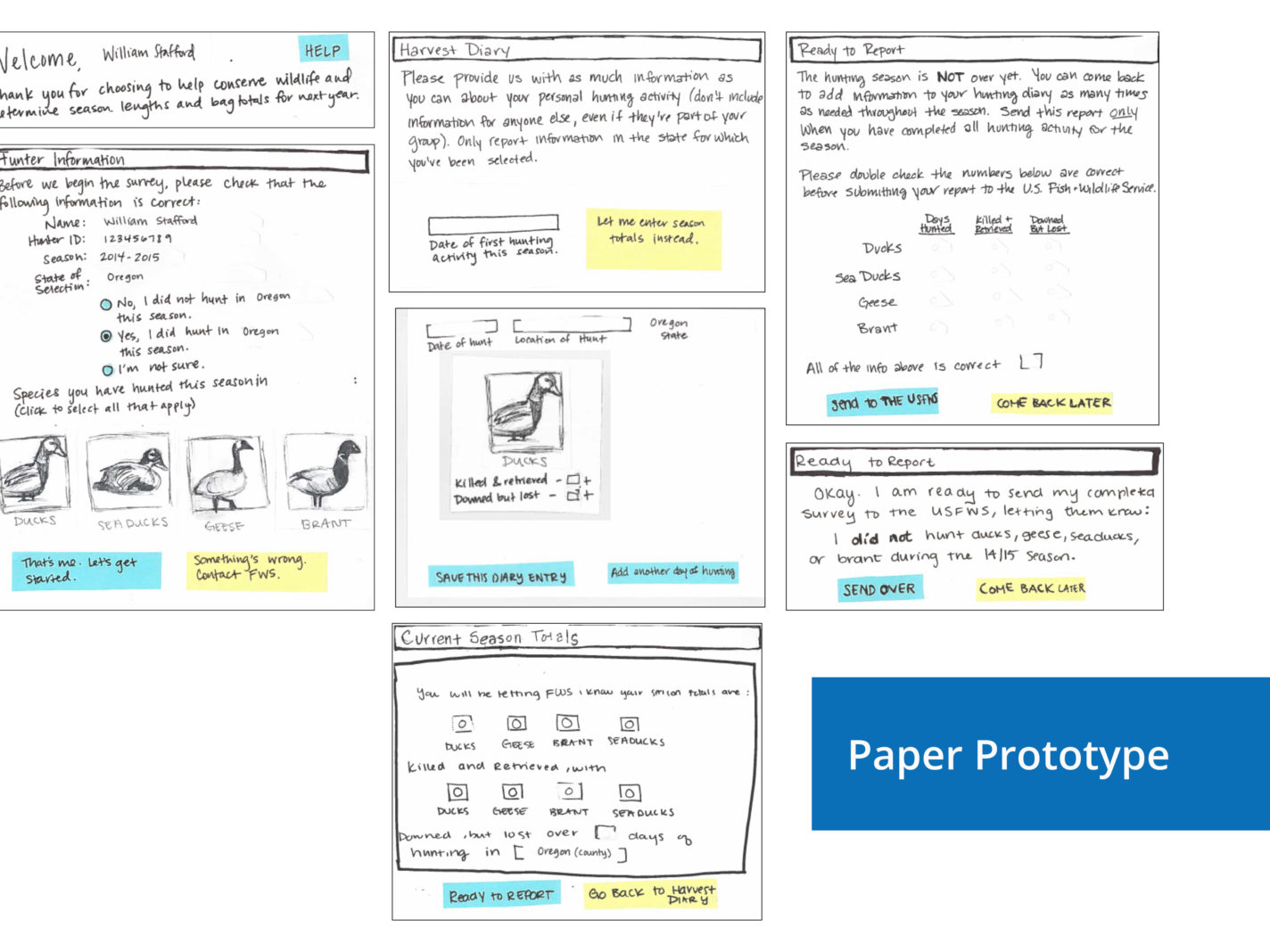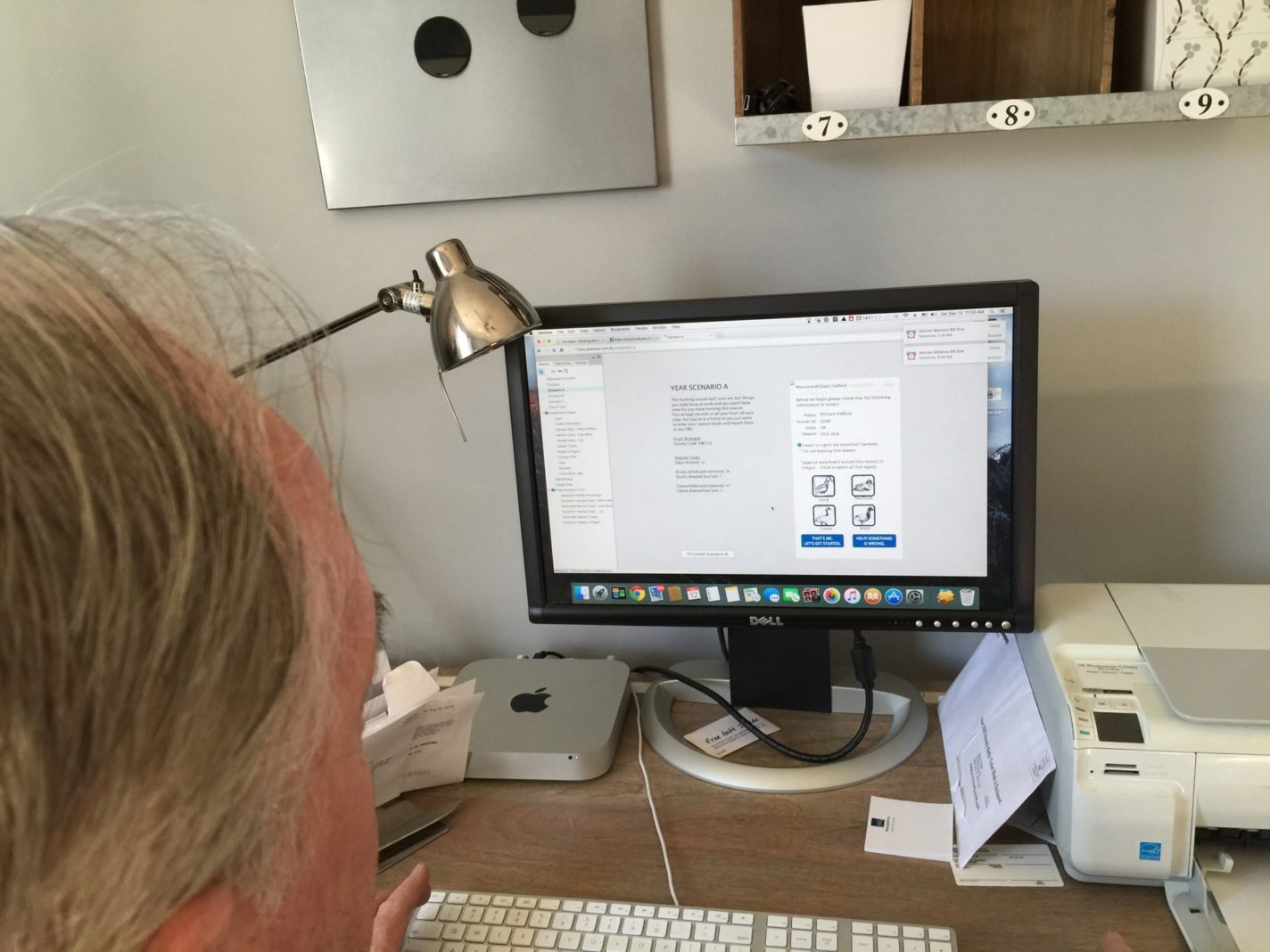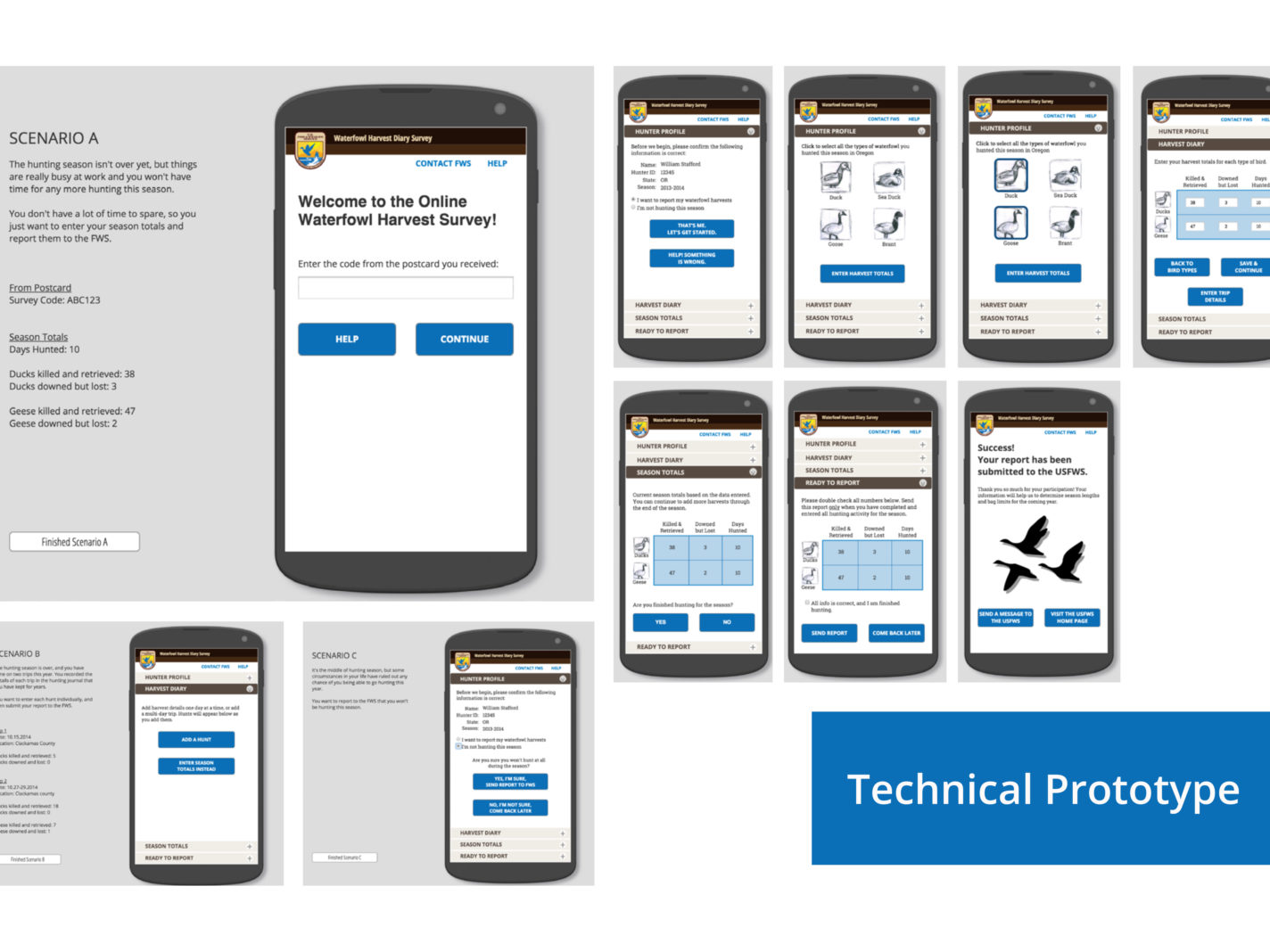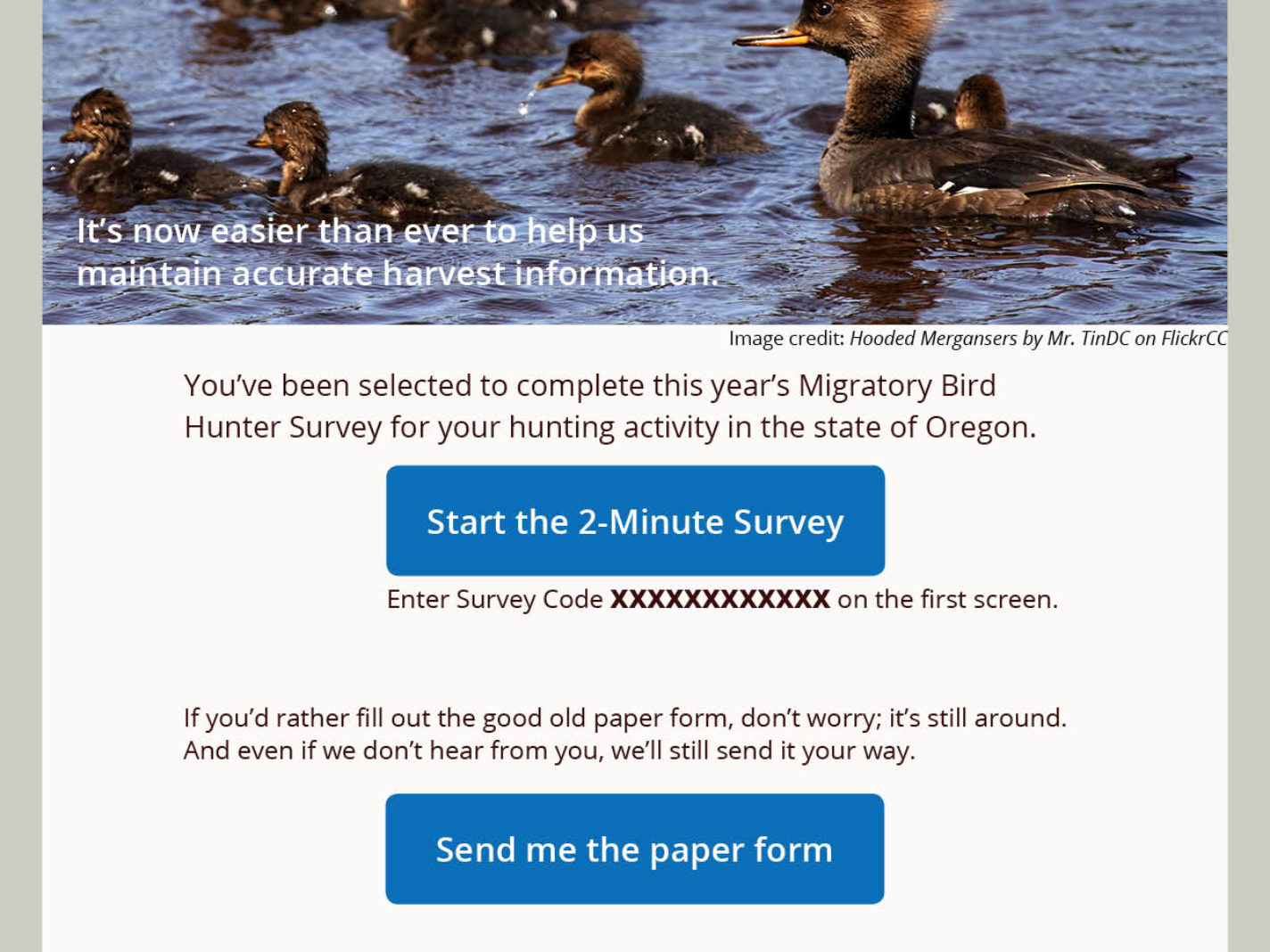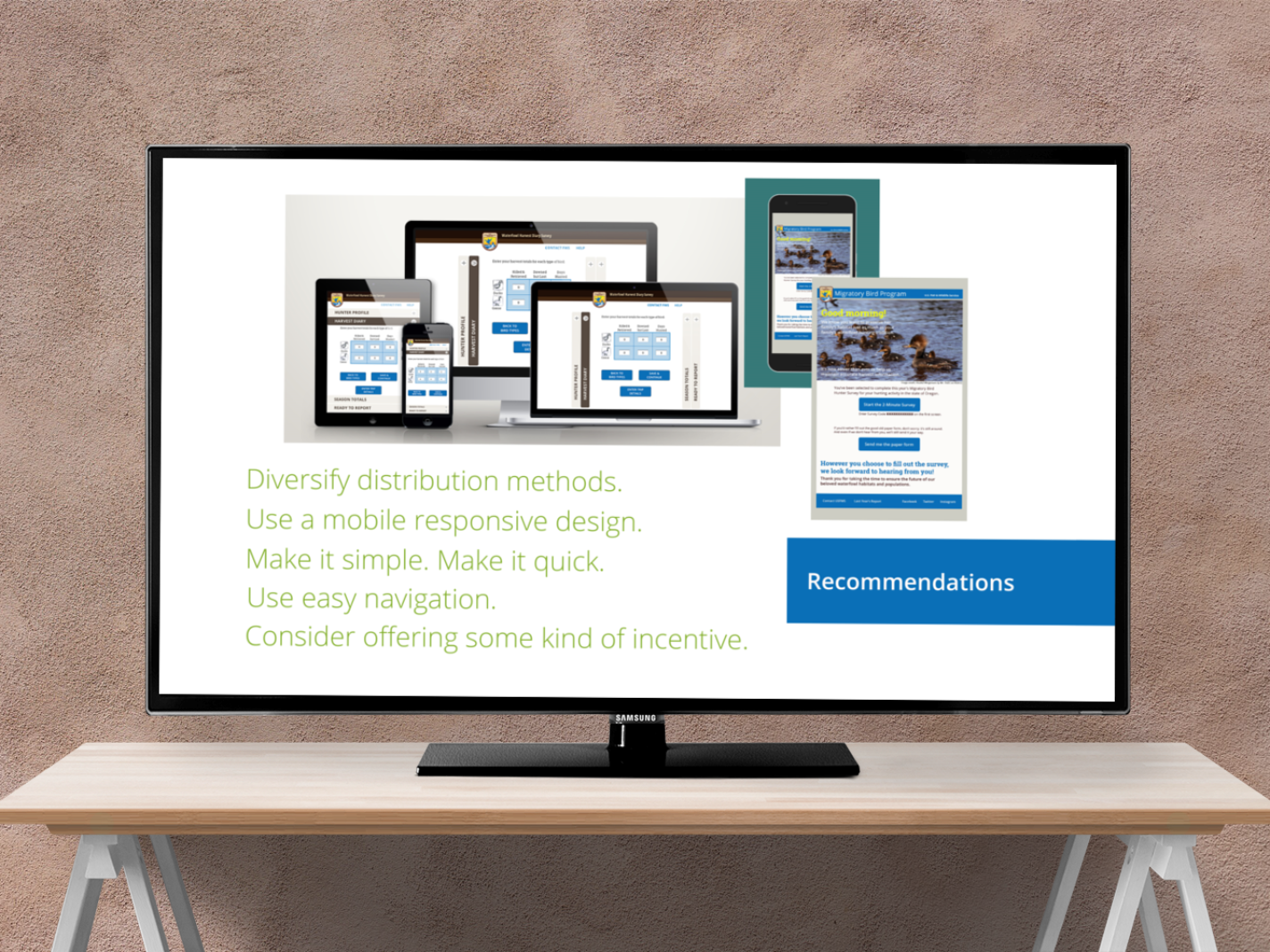For a course in interaction design, the United States Fish and Wildlife Service (USFWS) asked that we look into ways to update their annual migratory waterfowl hunter harvest survey, which is a physical survey form sent to tens of thousands of registered waterfowl hunters in the U.S. every year. The survey is a diary asking the hunters to record their hunting experiences throughout the season, and the USFWS uses that information to estimate the populations of different types of waterfowl as well as to determine bag limits for hunters each season. Because of this symbiotic relationship, the response rates for the survey are 50%, which is actually quite high, but the design of the survey creates user input errors that the USFWS staff end up having to correct before the data can be evaluated. Our task was to provide recommendations for how to improve the user experience of tracking their hunting experiences, as well as for ways to increase user response rates to make the data more reliable.
We researched our user population and survey design for a literature survey, developed user personas based on this background information, used convenience sampling to generate a group of users, created and tested a paper prototype of a website/mobile application version of the survey, created and virtually tested a digital version of the survey, and ultimately brought our recommendations to the client.
Client: United States Fish and Wildlife Service
Group Members: Jessica Lieberman, Rachel Sherard, Clay Siefken
Professor Greg Walsh
IDIA 612: Interaction and Interface Design, The University of Baltimore

